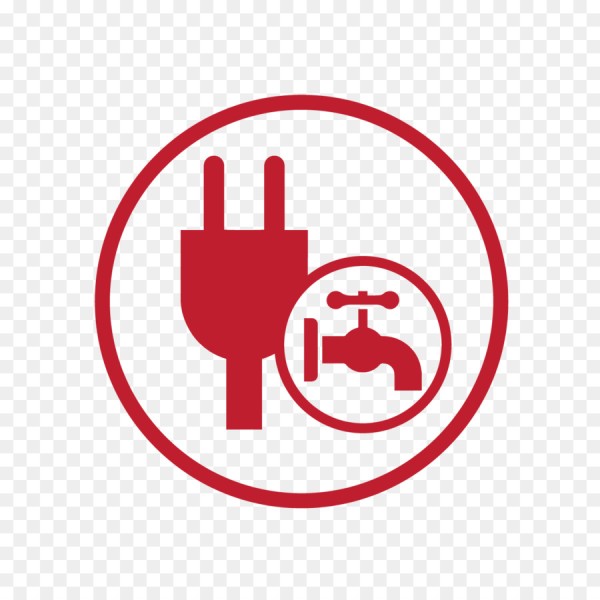Understanding CCTV & Burglar Alarms
In today's world, ensuring the safety and security of our homes and businesses is more important than ever. With technological advancements, CCTV and burglar alarms have become essential tools in safeguarding our properties. These systems not only deter potential intruders but also provide peace of mind. Let's delve into the world of CCTV and burglar alarms, exploring their features, benefits, and how they work together to enhance security.
The Basics of CCTV Systems
Closed-Circuit Television (CCTV) systems are a cornerstone of modern security. They consist of cameras that capture video footage, which is then transmitted to a set of monitors or recorded for later viewing. CCTV systems can be found in various settings, from homes to large commercial establishments, and they serve as a deterrent to criminal activity.
Types of CCTV Cameras
- Dome Cameras: These are named for their dome-shaped housing and are commonly used indoors. They are discreet and offer a wide field of view.
- Bullet Cameras: Known for their long, cylindrical shape, bullet cameras are typically used outdoors. They are ideal for capturing images over long distances.
- PTZ Cameras: Pan-Tilt-Zoom cameras can be remotely controlled to pan left and right, tilt up and down, and zoom in and out, providing comprehensive coverage.
- IP Cameras: Internet Protocol cameras transmit data over a network, allowing for remote viewing and management.
Key Features of CCTV Systems
CCTV systems come with a range of features that enhance their effectiveness. Some of these include night vision, motion detection, and high-definition video quality. Night vision allows cameras to capture clear images in low-light conditions, while motion detection triggers recording only when movement is detected, saving storage space. High-definition cameras provide clear and detailed images, which can be crucial for identifying intruders.
The Role of Burglar Alarms
Burglar alarms are designed to detect unauthorized entry into a building or area. They are a critical component of any security system, providing an immediate alert when a breach occurs. Burglar alarms can be installed in homes, offices, and other properties to protect against theft and vandalism.
Components of a Burglar Alarm System
- Control Panel: The brain of the system, where all components are connected and controlled.
- Sensors: Devices that detect movement or the opening of doors and windows. Common types include motion sensors, door/window sensors, and glass break detectors.
- Alarm Siren: Emits a loud sound to alert occupants and deter intruders.
- Keypad: Used to arm and disarm the system, often featuring a code or key fob entry.
Types of Burglar Alarms
- Wired Alarms: These systems are hardwired into the building's electrical system, offering reliable performance.
- Wireless Alarms: Easier to install, these systems use radio signals to communicate between components.
- Monitored Alarms: Connected to a monitoring centre that alerts authorities if the alarm is triggered.
- Unmonitored Alarms: Rely on the alarm siren to alert neighbours and occupants.
Integrating CCTV & Burglar Alarms
Combining CCTV and burglar alarms creates a comprehensive security solution. While CCTV provides visual surveillance, burglar alarms offer immediate alerts. Together, they enhance the overall security of a property, providing both deterrence and response capabilities.
Benefits of Integration
- Enhanced Deterrence: The presence of both systems can discourage potential intruders more effectively than either system alone.
- Improved Response: When an alarm is triggered, CCTV footage can provide real-time information to responders.
- Comprehensive Coverage: CCTV cameras can monitor areas that alarms cannot, such as outdoor spaces.
- Remote Monitoring: Integrated systems often allow for remote access, enabling property owners to monitor their premises from anywhere.
Choosing the Right System for Your Needs
Selecting the appropriate CCTV and burglar alarm system depends on various factors, including the size of the property, budget, and specific security needs. It's essential to assess these factors carefully to ensure the chosen system provides adequate protection.
Factors to Consider
- Property Size: Larger properties may require more cameras and sensors to ensure complete coverage.
- Budget: While high-end systems offer advanced features, there are also cost-effective options available.
- Specific Needs: Consider any unique security challenges, such as high-crime areas or valuable assets.
- Future Scalability: Choose a system that can be easily expanded if needed.
Installation and Maintenance
Proper installation and regular maintenance are crucial for the effectiveness of CCTV and burglar alarm systems. Professional installation ensures that all components are correctly set up and functioning. Regular maintenance checks help identify and resolve any issues before they compromise security.
Professional vs. DIY Installation
- Professional Installation: Offers expertise and ensures optimal system performance. Ideal for complex systems.
- DIY Installation: Suitable for simpler systems and those with technical skills. Can be more cost-effective.
Maintenance Tips
- Regularly test all components to ensure they are working correctly.
- Keep cameras clean and free from obstructions.
- Update software and firmware to protect against vulnerabilities.
- Replace batteries in wireless systems as needed.
Legal and Ethical Considerations
When installing CCTV and burglar alarms, it's important to consider legal and ethical implications. This includes respecting privacy rights and adhering to local regulations regarding surveillance and alarm systems.
Privacy Concerns
- Ensure cameras do not capture footage of neighbouring properties without consent.
- Inform visitors and employees about the presence of surveillance systems.
Regulatory Compliance
- Familiarise yourself with local laws regarding CCTV and alarm system installation.
- Obtain necessary permits and approvals if required.
Future Trends in Security Systems
The security industry is constantly evolving, with new technologies and trends shaping the future of CCTV and burglar alarms. Staying informed about these developments can help property owners make informed decisions about their security needs.
Emerging Technologies
- Artificial Intelligence: AI-powered systems can analyse footage in real-time, identifying potential threats more accurately.
- Smart Home Integration: Security systems are increasingly being integrated with smart home devices for seamless control.
- Cloud Storage: Offers secure and scalable storage solutions for CCTV footage.
Trends to Watch
- Increased use of biometric authentication for alarm systems.
- Greater emphasis on cybersecurity to protect against hacking.
- Development of more eco-friendly security solutions.
Frequently Asked Questions
What is the primary purpose of CCTV systems?
CCTV systems are primarily used for surveillance, allowing property owners to monitor activities and deter criminal behaviour.
How do burglar alarms work?
Burglar alarms detect unauthorised entry through sensors and trigger an alert, often sounding a loud siren to deter intruders.
Can CCTV and burglar alarms be integrated?
Yes, integrating CCTV and burglar alarms provides a comprehensive security solution, enhancing both deterrence and response capabilities.
What factors should I consider when choosing a security system?
Consider the size of your property, budget, specific security needs, and future scalability when selecting a security system.
Is professional installation necessary for security systems?
While professional installation ensures optimal performance, DIY installation can be suitable for simpler systems and those with technical skills.
Are there legal considerations for installing CCTV and burglar alarms?
Yes, it's important to respect privacy rights and adhere to local regulations regarding surveillance and alarm systems.
In conclusion, CCTV and burglar alarms are vital components of modern security systems, offering protection and peace of mind. By understanding their features, benefits, and integration, property owners can make informed decisions to safeguard their homes and businesses effectively.

























